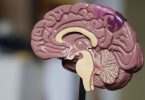Background
Psychotropic chemicals are ubiquitous in our environment, particularly in the plant world as well as in several hundred species of fungi and a handful of animals. [1,2] While having existed for millions of years, these molecules and the botanical species that produce them (particularly in the grass and pea families) were eventually recognized by early humans as having psychoactive and medicinal properties, often associated with divinatory/shamanic ceremonies. These effects are now understood as being attributed to a class of tryptamine-derived molecules with similar structure to the human neurotransmitter serotonin (5-hydroxytryptamine, 5-HT), which interacts with 5-HT2A and another 15 human serotonin-related receptors. [3]
Recently, it was uncovered that in addition to serotonin, mammals have the enzymatic machinery required to manufacture N,N-dimethyltryptamine or DMT in the pineal gland which is biosynthesized in the rat and allegedly in the human brain by two enzymes, aromatic-L-amino acid decarboxylase (AADC) and indolethylamine-N-methyltransferase (INMT). [4] This type of information, in particular the endogenous production of DMT in the human brain and its actions as a possible endogenous neuroregulatory agent, provides a catalyst for the discovery and characterization of novel serotonergic psychotropics (e.g., lysergic acid diethylamide (LSD), psilocin, mescaline, ibogaine, DMT, 3,4-methylenedioxymethamphetamine or MDMA) and their clinical application in psychological and mental health.
Of the major psychotropic tryptamines, psilocybin is likely the most well known. This indole alkaloid is produced mainly by mushrooms from one of three basidiomycete genus, including Psilocybe also known as “magic” mushrooms. Psilocybin itself is not psychoactive – rather, it is the dephosphorylated molecule psilocin that causes the hallucinogenic effect. Psilocybin is rapidly dephosphorylated to psilocin following ingestion in the mucosa by alkaline phosphatases and nonspecific esterases. [5]
Recently, thanks in part to changing views on the criminalization of illicit drug use, the therapeutic potential of several recreational drugs has been investigated. Psilocybin has seen success in clinical trials for the treatment of different psychological and neurological afflictions. With the impending approval of psilocybin as a pharmaceutical drug, best practices and analytical methods must be developed and validated to rapidly detect, quantify, and trace psychedelics medicine.
Implementing a multifaceted analytical chemistry and genetic approach to generate effective product traceability tools for application in law enforcement, research, and the clinic appears as low hanging fruits in the psychedelic renaissance.
Analytical method development for the rapid detection and quantification of classical psychedelics using HPLC-DAD and NIR spectroscopy
One of the gold standards in the detection and quantification of narcotics, including cannabinoids and several classes of alkaloids is the high-performance liquid chromatography with diode array detector (HPLC-DAD) method. While such benchmark approaches are well developed and validated, the analysis of illicit drugs and natural products still faces many challenges, mainly regarding the production of timely and reliable results and the production of added value from the generated data. To cope with the trend toward the decentralization of forensic applications, novel technologies may offer potential solutions.
To develop portable methods for the detection of classical psychedelics, we have developed near-infrared spectroscopy (NIR) methods and associated chemometric models to enable the portable and rapid quantification of indole alkaloids and other classical psychedelics using the MicroNIR Onsite W 1700 (Viavi Solutions Inc). This system has recently been used by over 60 jurisdictions in Switzerland and other European countries for the rapid detection of cannabis (cannabidiol/delta-9-tetrahydrocannabinol) and other narcotics (heroin, cocaine, MDMA, ketamine); see Figure 1, www.nirlab.com). [6]
The approach includes screening the same samples run on the HPLC-DAD using the NIR devise to collect spectral readings. These spectra are then coupled to the HPLC-DAD chemical profiles to develop optimized chemometric models for psilocin, psilocybin, baeocystin, norbaeocystin, aeruginascin, and potentially beta carbolines that may synergize in the effect of the psychedelic tryptamines. The finished product is implemented using a mobile environment via its connection to a dedicated mobile application (NIRLAB Mobile App) as illustrated in Figure 1. The main roles of the App are to send the recorded NIR spectra to a remote database (cloud) and to run the algorithms that have been developed for the qualification and the quantification of the specimens investigated. The results of the calculations are then sent back to the mobile app allowing a quasi-direct consultation of the results by the user (approximately five seconds).

Genetic characterization and future aspects of psychedelic research
In addition to chemical fingerprints, the utility of genetic tools has proven to have important applications for the traceability of the cannabis supply with molecular tools having been applied to fingerprinting individual cannabis clones. [7-10] Such efforts were feasible by the availability of public Cannabis genetic data shared by private and public institutions on dedicated platforms such as www.kannapedia.net, that act as interpretation platforms for the swath of genomic data available in public repositories such as the National Center for Biotechnology Information (www.ncbi.com).
Following in the footsteps of work done on open access cannabis genetic data, scientists are now developing similar tools for model species of psychedelic fungi and plants. Groups such as the Entheome Foundation, a registered 501c3 non profit (www.entheome.org) are endeavoring to provide publicly available, whole genome sequencing data for some 200 species containing psychedelic substances. So far, the groups have gathered genomic data for three Psilocybe mushroom species, with a fourth species in the works, as well as dozens of others species such as Amanita and Claviceps. Others have leveraged recent Psilocybe cubensis genomic data (McKernan et al, 2021) [11] and produced a highly contiguous reference genome (https://www.ncbi.nlm.nih.gov/Traces/wgs/JAFIQS02) that organizes the information into 13 chromosomes. Such databases can enable the development of targeted arrays of genome-wide single nucleotide polymorphism (SNP) markers that can be applied to classification and traceability of botanically-derived psychedelics.
While NIR spectral data and targeted genetic technologies hold the promise to democratize rapid means to irrefutably identify and trace particular accessions of interest, future in-depth chemotyping using advanced analytical methods such as LC-MS-MS and nuclear magnetic resonance will need to be employed to match the large scale genomic dataset and shed light on the complex biochemistry of each psychedelic species of interest. This future research will help uncover the mechanism underlying biosynthesis and production of a host of chemical entities as well as their chemical entourage. Coupled with the development of preclinical and clinical models of particular indications, chemical and genomic information will pave the way for an exciting future for fundamental psychedelics research and its translation into the clinic.
Figure 2: Phylogenetic tree showing the relationship between 84 psychedelic mushroom samples from which the Egret genetic barcode was developed. Reproduced from data made available by McKernan and colleagues. [12] Of particular note, the more potent P. cubensis (PC) accessions such as P. Envy cluster closely to the P. azurescens (PAz), P. tampanensis (PT), and P. mexicana (PM) accessions.
References
[1] Pendell D. Pharmako/Gnosis: Plant Teachers and the Poison Path. North Atlantic Books; Updated edition, 2010.[2] Christian ST, Harrison R, Quayle E, Pagel J, Monti J. The in vitro identification of dimethyltryptamine (DMT) in mammalian brain and its characterization as a possible endogenous neuroregulatory agent. Biochem Med. 1977;18(2):164-183. [journal impact factor = 2.313; times cited = 43]
[3] Ray TS. Psychedelics and the human receptorome [published correction appears in PLoS One. 2010;5(3). doi: 10.1371/annotation/e580a864-cf13-40c2-9bd9-b9687a6f0fe4]. PLoS One. 2010;5(2):e9019. [journal impact factor = 3.24; times cited = 149]
[4] Dean J, Liu T, Huff S. et al. Biosynthesis and extracellular concentrations of N,N-dimethyltryptamine (DMT) in mammalian brain. Sci Rep. 2019;9:9333. https://doi.org/10.1038/s41598-019-45812-w [journal impact factor = 4.380; times cited = 21]
[5] Tyls F, Palenicek T, Horacek J. Psilocybin—summary of knowledge and new perspectives. Eur Neuropsychopharmacol. 2014;24(3):342–356. doi:10.1016/j.euroneuro.2013.12.006 [journal impact factor = 4.600; times cited = 118]
[6] Coppey F, Bécue A, Sacré PY, Ziemons EM, Hubert P, Esseiva P. Providing illicit drugs results in five seconds using ultra-portable NIR technology: An opportunity for forensic laboratories to cope with the trend toward the decentralization of forensic capabilities. Forensic Sci. Int. 2020;317:110498. [journal impact factor = 2.395; times cited = 12]
[7] Henry P. Genome-wide analyses reveal clustering in Cannabis cultivars: the ancient trilogy of a panacea. PeerJ PrePrints. 2015;3:e1935 https://dx.doi.org/10.7287/peerj.preprints.1553 [journal impact factor = 2.984; times cited = 10]
[8] Henry P. Cannabis chemovar classification: terpenes hyper-classes and targeted genetic markers for accurate discrimination of flavours and effects. PeerJ Preprints. 2017;5:e3307v1. https://doi.org/10.7287/peerj.preprints.3307v1 [journal impact factor = 2.894; times cited = 7]
[9] Henry P, Hilyard A, Johnson S, Orser C. Predicting chemovar cluster and variety verification in vegetative cannabis accessions using targeted single nucleotide polymorphisms. PeerJ Preprints. 2018;6:e27442v1 https://doi.org/10.7287/peerj.preprints.27442v1 [journal impact factor = 2.894; times cited = 4]
[10] Henry P, Khatodia S, Kapoor K, et al. A single nucleotide polymorphism assay sheds light on the extent and distribution of genetic diversity, population structure and functional basis of key traits in cultivated north American cannabis. J Cannabis Res. 2020;2:26. https://doi.org/10.1186/s42238-020-00036-y [journal impact factor = N/A; times cited = 4]
[11] McKernan K, Kane L, Helbert Y, et al. A whole genome atlas of 81 Psilocybe genomes as a resource for psilocybin production. [version 2; peer review: 1 not approved]. F1000Research. 2021;10:961. [journal impact factor = 2.297; times cited = 1]









